



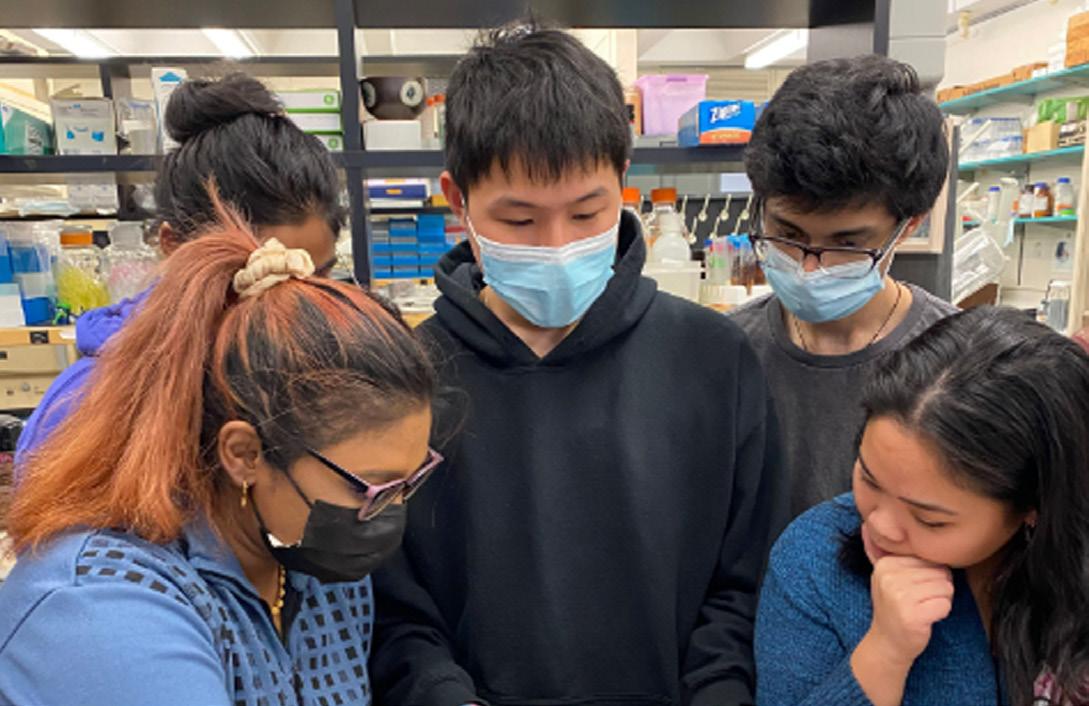


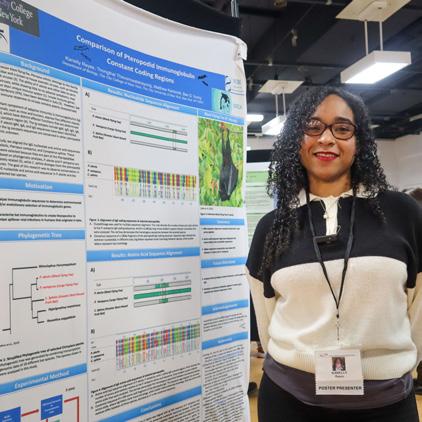

2022-2023
Issue
|
#11
In this Issue
Advertisements 3
Faculty Spotlight 4-5
Publications & 6-7
Presentations
Course Feature 8-9
Student Spotlights 10-13
Biology Celebrates 14-17
Biology Recognizes 18-19
Where Are They Now 20-21
Inspiring Scientists 22-23
Department Chair
Dr. Jonathan Levitt
B.S. Head Advisor
Dr. Yevgeniy Grigoryev
B.S. M.S. Advisor
Dr. Jay Edelman
M.S. Advisor
Dr. Amy Berkov
Dr. Jonathan Levitt
PhD Advisor
Dr. Shireen Saleque
Biotechnology
B.S. Advisor
Dr. Christine Li
Dr. Karen Hubbard
Biotechnology
M.S. Advisor
Dr. Christine Li
Senior Editor
Christine Stefano
Contributing Editor
Dr. Jonathan Levitt
Dr. David Lohman
Graphic Designer
Jordan Jackson
Design Concept
Rychelle McKenzie
Senior Writer
Lorraine Colbert
Contributing Writers
Dr. Andrey Rudenko
Manal Elbarhoumi
Photos
Jason Redman and featured community members
Chief College Laboratory Technician
Hector Fermin
Senior College Laboratory Technicians
Andrew Blake
Suzhen Chen
Jhunior Morillo
Vitaly Zyhadlo
Senior Staff
Christine Stefano
Yolanda Pitt
Student Assistants
Nicole Baque
Duyen Bui
Shenika Christopher
Dakarie Downie
Manal Elbarhoumi
Ndeyeoumy Fall
Delilah Feliciano
Gabriela Ford
Joey Gallo-Rodriguez
Lev Gilinskiy
Inam Hassan
Yves Jeudy
Oumou Ly
Ramsha Malik
Farhana Nasrin
Laura Ortega
Tasnoba Rahman
Catherine Smith
Shahreen Sultana
Alana Todd
Maryam Tuba
Johnathan Williams
2
Ways to Get Involved with THE DEPARTMENT OF BIOLOGY


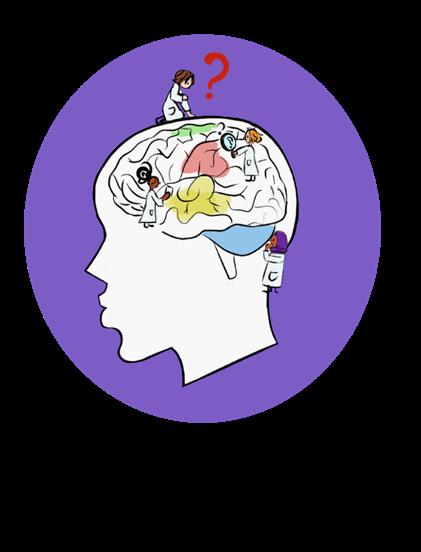

3
Faculty SPOTLIGHT
Dr. Karen Hubbard
Dr. Karen Hubbard grew up in Chicago, Illinois, and completed much of her schooling in the surrounding Chicago area, including the completion of her doctoral degree with a focus in biology at the Illinois Institute of Technology. It was here that she flourished in her interest of neuroscience and completed her doctoral thesis in neuropharmacology. When deciding where to pursue her postdoctoral training, she moved to the east coast, where her interest evolved from neuroscience to cancer to aging-related research. Starting in Connecticut and then moving to the New York/New Jersey area, Dr. Hubbard gained postdoctoral research experience at the Albert Einstein College of Medicine, New York Medical College, and Rutgers New Jersey Medical School, formally known as the University of Medicine and Dentistry of New Jersey (UMDNJ). During her training, she learned about the techniques of mentorship, which she took with her when joining the City College community as an Associate Professor in 1995. Today, as a senior faculty member and Full Professor, she pays close attention to how she mentors her students to ensure that she can be critical from a positive stance. When looking for work at the end of her postdoctoral training, her mentor Dr. Harvey Ozer,
former faculty member at Hunter College, told Karen to go to the next level and choose an environment where she can flourish. This led her to CCNY. When first stepping onto campus, she was astounded by the historic gothic buildings and ethnic diversity of the student body. Looking back on her career, it has been the students that have kept Karen excited to teach and mentor and be a part of the science community for 28 years. This includes the students who are a part of her lab team, whose unique working dynamic makes them feel like family.
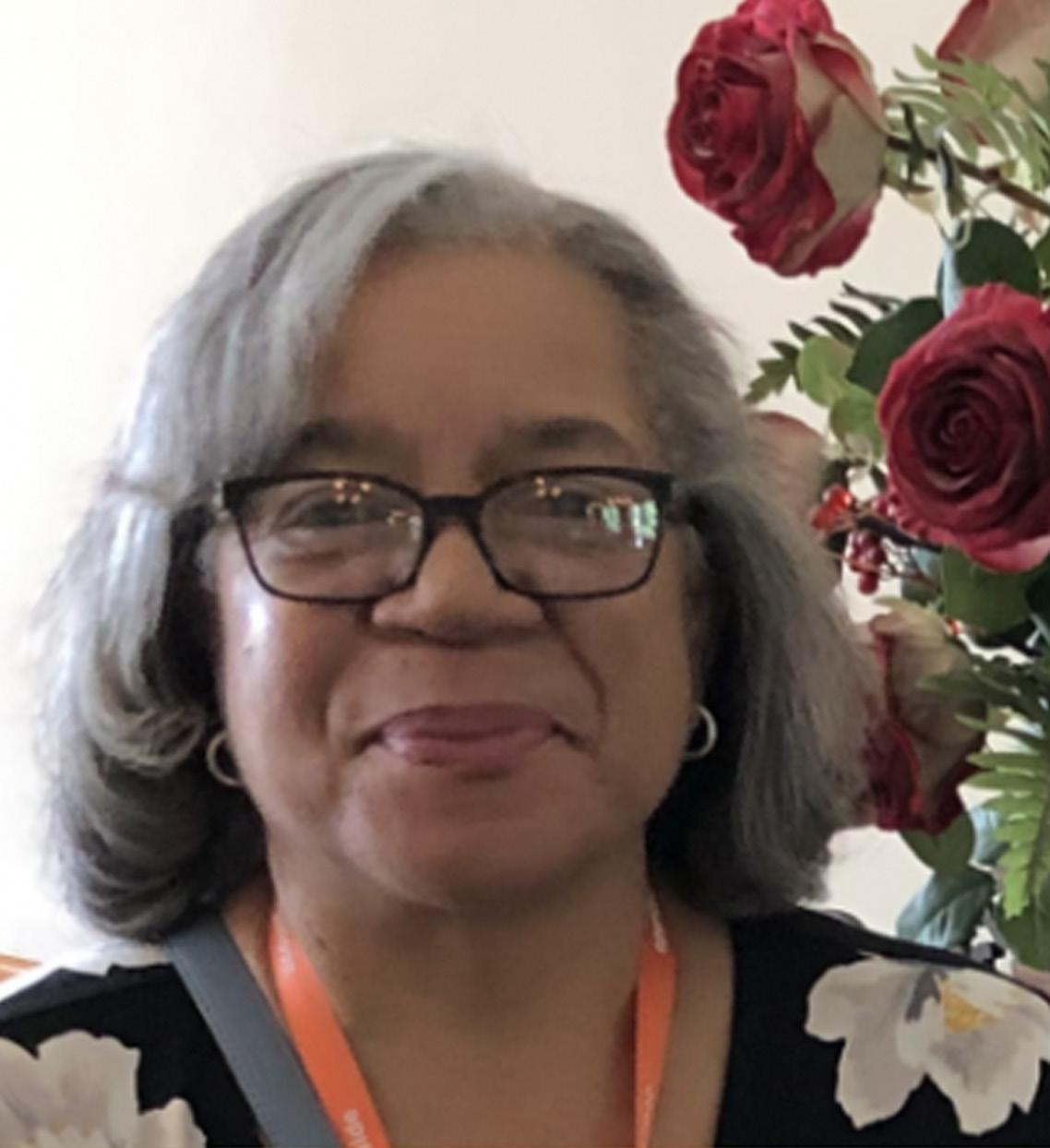
When Dr. Hubbard started as an Associate Professor, she taught core classes such as Introductory Biology, but since receiving tenure and promotion to Full Professor, she has taught biology electives at the undergraduate and doctoral level. These include courses such as Cancer Biology, Cellular Senescence and Cell Development, and Developmental Biology. These courses align with her lab research, which looks at the relationships between the processes of cellular senescence and cancer.
Living organisms have a natural internal mechanism that stops cell division, but when something happens to interrupt that mechanism, there is a likelihood of normal cells transforming into cancer cells. It is this concept that Dr. Hubbard teaches in her Cancer Biology course and in her research lab, which has been active for almost 20 years with the hard work of her lab crew and generous grant support. While teaching and pursuing research in the lab, she is also a part of collaborative projects with NY area cancer research centers, and is involved in mentoring junior CCNY faculty members to help them through the tenure and promotion process. Dr. Hubbard also served as Chair of Biology for one term. Even though she wears many hats, she is an introvert at heart and enjoys learning from others one-on-one; working with this internalized
4
“If you don’t go for it, you wouldn’t know if you could do it, and if you’re going to fail, just fail, because then you know that particular thing is not right for you.”
nature is what has led to her success. She trusts herself to work independently but believes that “when you’re a successful person, you know when to reach out and ask for help.” This includes delegating when things become overwhelming and taking risks for certain opportunities, because “if you don’t go for it, you wouldn’t know if you could do it, and if you’re going to fail, just fail, because then you know that particular thing is not right for you.” She experienced this during her postdoctoral training on telomeres, aging, and cancer, while identifying proteins that were involved in these processes but also involved in RNA metabolism. She had limited knowledge of RNA metabolism and asked her mentor if she was doing the right thing. He told her to not worry about the research not working until she was sure it wouldn’t. Karen advises others to take their ego off the table and not to be afraid to ask for help, whether it is with classwork, research, or grant or manuscript writing, because “your best friend is someone who’s going to read what you’ve written and tear it to shreds.”
Dr. Hubbard participates in multiple exciting research projects and programs in collaboration with other medical institutions. One project, with the Memorial
Sloan Kettering Cancer Center in New York, has brought her back to her earlier work with cell aging, RNA binding proteins, and RNA metabolism. In this project she works with clinical neuropsychologists and gerontologists to study chemotherapy induced cognitive impairment, or “chemo fog”, which is a condition that impairs patients’ memory and ability to multitask at differing levels and is influenced by age. Her second research project is in partnership with a colleague from Brooklyn College. They are studying metal-based chemotherapeutics to treat disproportionately affected black female patients with triple negative breast cancer. As a black woman, Dr. Hubbard sees this project with great interest and as an opportunity to address the clear ethnic disparities in breast cancer diagnoses. She also participates in a program called Disrupt, a partnership between City College and Memorial Sloan Kettering, to disrupt how minority patients are normally recruited into into clinical care, clinical trials, and cancer diagnoses by rethinking medical interactions with communities. This project is leading to the opening of a scientific institute that will be a collaboration between City College, the Albert Einstein College of Medicine, Columbia University, and Mount Sinai. Another program she participates in is ADVANCE, a project funded by the National Science Foundation which seeks to advance the careers of women in science to becoming Full Professors. Partnering with these programs excites Dr. Hubbard, because she knows that “research is not done in a vacuum, you need to have dialogue.”

5
“Research is not done in a vacuum, you need to have dialogue.”
Publications & PRESENTATIONS
Dr. Robert Anderson
Kass, J.M. (Ph.D. student, CCNY/CUNY), G.E. Pinilla-Buitrago (Ph.D. student, CCNY/CUNY), A. Paz (Ph.D. student, CCNY/CUNY), B.A. Johnson (master’s student, CCNY/CUNY), V. GrisalesBetancur (visiting scholar, CCNY), S.I. Meenan (undergraduate student, CUNY), D. Attali, O. Broennimann, P.J. Galante, B.S. Maitner, H.L. Owens, S. Varela, M.E. Aiello-Lammens, C. Merow, M.E. Blair, and R.P. Anderson. 2023. Wallace 2: a shiny app for modeling species niches and distributions redesigned to facilitate expansion via module contributions. Ecography, 2023: e06547. https://doi.org/10.1111/ ecog.06547
Anderson, R.P. 2023. Integrating habitatmasked range maps with quantifications of prevalence to estimate area of occupancy in IUCN Assessments. Conservation Biology, 37: e14019.https://doi.org/10.1111/cobi.14019
Merow, C., P.J. Galante, J.M. Kass (Ph.D. student, CCNY/CUNY), M.E. Aiello-Lammens, C. Babich Morrow, B.E. Gerstner, V. GrisalesBetancur, A.C. Moore, E.A. Noguera-Urbano, G.E. Pinilla-Buitrago (Ph.D. student, CCNY/ CUNY), J. Velásquez-Tibatá, R.P. Anderson, and M.E. Blair. 2022. Operationalizing expert knowledge in species’ range estimates using diverse data types. Frontiers of Biogeography, 14: e53589. https://doi.org/10.21425/
F5FBG53589
Morente-López, J. (visiting scholar, CCNY), J.M. Kass (Ph.D. student, CCNY/CUNY), C. Lara-Romero, J.M. Serra-Diaz, J.C. SotoCorrea, R.P. Anderson*, and J.M. Iriondo*. [*Equal contribution of senior authors.] 2022. Linking ecological niche models and common garden experiments to predict phenotypic differentiation in stressful environments: assessing the adaptive value of marginal populations in an alpine plant. Global Change Biology, 28:4143–4162. https://onlinelibrary. wiley.com/doi/pdfdirect/10.1111/gcb.16181
Peterson, A. T. et al. (44 total authors, including R.P. Anderson and CCNY/CUNY doctoral student G.E. Pinilla-Buitrago) 2022. ENM2020: a free online course and set of resources on modeling species niches and distributions. Biodiversity Informatics, 17:1–9. https:// journals.ku.edu/jbi/article/view/15016/15152
Dr. Ana Carnaval
Albert, J., A.C. Carnaval, S.G.A. Flantua, L.G.A. Lohmann, C.C. Ribas, D. Riff, J.D. Carrillo, Y. Fan, J. Figueiredo, J.M. Guayasamin, C. Hoorn, G.H. Melo, N. Nascimento, C.A. Quesada, C.U. Ulloa, P. Val, J. Arieira, A.C. Encalada, and C.A. Nobre. 2003. Human impacts far outpace natural processes in the Amazon. Science, 379:eabo5003. https://doi.org/10.1126/science. abo5003
Article featured online at https://www.bloomberg.com/news/ articles/2023-01-26/destruction-of-amazonrainforest-puts-plants-animals-humans-atrisk?leadSource=uverify%20wall
https://www.gc.cuny.edu/news/scientists-raisealarms-about-destruction-amazon https://www.uib.no/en/cesam/160145/humanimpacts-outpace-natural-processes-amazon Mercier, K.P.*, M.M. Vasconcellos**, E.G.A. Martins, J.R. Pirani, F.A. Michelangeli, and A.C. Carnaval. 2023. Linking environmental stability with genetic diversity and population structure in two Atlantic Forest palm trees. Journal of Biogeography, 50:197-208. https://doi. org/10.1111/jbi.14523
Paz, A.*, L. Hernandez*+, L.S.O. Melo#, M. Lyra#, C.F.B. Haddad, and A.C. Carnaval. 2022. Extreme environments filter functionally rich communities of Atlantic Forest treefrogs along altitudinal and latitudinal gradients. Ecography, 2022:e06138. https://doi.org/10.1111/ ecog.06138
Paz, A.*, T.S. Silva, A.C. Carnaval. 2022. A framework for near-real time monitoring of diversity patterns based on indirect remote sensing, with an application in the Brazilian Atlantic rainforest. PeerJ, 10:e13534. https:// doi.org/10.7717/peerj.13534
Sales, L.P., M. Galetti, A. Carnaval, S. Monsarrat, J.-C. Svenning, and M.M. Pires. 2022. The effect of past defaunation on ranges, niches, and future biodiversity forecasts. Global Change Biology, 28: 3683-3693. https://doi. org/10.1111/gcb.16145
Cavender-Bares, J., F. Schneider, M.J. Santos, A. Armstrong, A. Carnaval, K. Dahlin, L. Fatoyinbo, G. Hurtt, D. Schimel, P. Townsend, S. Ustin, Z. Wang, and A. Wilson. 2022. Integrating remote sensing with ecology and evolution to advance biodiversity conservation. Nature Ecology & Evolution, 6:506-519. https://doi.org/10.1038/ s41559-022-01702-5
Dr. Shubha Govind
Arguelles, J., J. Lee, L.V. Cardenas, S. Govind, and S. Singh. (2023) In silico analysis of a Drosophila parasitoid venom peptide reveals prevalence of the cation-polar-cation clip motif in knottin proteins. Pathogens, 12:143. https:// doi.org/10.3390/pathogens12010143. Special issue: “Behavior” of Fungi
New Directions in Drosophila Blood Cell Biology Conference, Strasbourg, Sep 19, 2022, The effects of a generalist parasite on the Drosophila larval lymph gland.
Participated (hosted) in the following Node Meeting (has pictures):
https://thegep.org/news/ny-nj-professionaldevelopment-rnm-june-3-2022/
Dr. Jonathan Levitt
Khalil, R., C. Gonzalez, S. Alsuwaidi, and J.B. Levitt. 2022. Developmental refinement of visual callosal inputs to ferret area 17. Journal of Comparative Neurology, 530:804-816. https://doi.org/10.1002/cne.25246
Dr. David Lohman
Aduse-Poku, K., D.J. Lohman, and I.D. Richardson. 2022. Revision of the genus Neptis Fabricius, 1807 (Lepidoptera, Nymphalidae) in the Afrotropical Region, Part 4: The phylogeny of the Nysiades group with eight new species. Metamorphosis, 22: 130-163.
Ch’ng, L., S.M. Tsang, Z.A. Ong, D.H.W. Low, S. Wiantoro, I. Smith, N.B. Simmons, Y.C.F. Su, D.J. Lohman, G.J.D. Smith, & I.H. Mendenhall. 2022. Co-circulation of alpha- and betacoronaviruses in Pteropus vampyrus flying foxes from Indonesia. Transboundary and Emerging Diseases, 69: 3917-3925. https://doi. org/10.1111/tbed.14762
Cotton, A.M., T. Doleck, X. Zhang, Y. Inayoshi, D.J. Lohman*, & S.-J. Hu*. 2022. Graphium septentrionicolus Page & Treadaway, 2013 (Lepiodptera: Papilionidae) is a distinct species. Zootaxa, 5154:211–224. https:// doi.org/10.11646/zootaxa.5154.2.6 *cocorresponding authors
Kawahara, A.Y.*, C. Storer, A.P.S. Carvalho, D.M. Plotkin, F. Condamine, M.P. Braga, E.A. Ellis, R.A. St Laurent, V. Barve. L. Cai, C. Earl, P. Frandsen, X. Li, H.L. Owens, W. ValenciaMontoya, K. Aduse-Poku, J.W. Breinholt, M. Espeland, E.F.A. Toussaint, K.M. Dexter, T. Doleck, A. Markee, R. Messcher, Y.-L. Nguyen, J.A.T. Badon, H.A. Benítez, M.F. Braby, P.A.C. Buenavente, W.-P. Chan, S.C. Collins, R.R. Childers, E. Dankowicz, R. Eastwood, Z.F. Fric, R.Gott, J.P.W. Hall, W. Hallwachs, N.B. Hardy, R.L. Hawkins Sipe, A. Heath, J.D. Hinolan, N.T. Homziak, Y.-F. Hsu, Y. Inayoshi, M.G.A. Itliong, D.H. Janzen, I.J. Kitching, K. Kunte, G. Lamas, M.J. Landis, E.A. Larsen, T.B. Larsen, J.V. Leong, V. Lukhtanov, C.A. Maier, J.I. Martinez, D.J. Martins, K. Maruyama, S. Maunsell, N.O. Mega, A. Monastyrskii, A.B.B. Morais, C.J. Müller, M.A.C. Naive, G. Nielsen, D. Peggie, H.P. Romanowski, S. Sáfián, M. Saito, S. Schröder, V. Shirey, A. Sourakov, G. Talavera, R. Vila, P. Vlasanek, H. Wang, A.D. Warren, K.R. Willmott, M. Yago, W. Jetz, M. Jarzyna, L. Ries, R.P. Guralnick, N.E. Pierce* & D.J. Lohman*. 2023. A global phylogeny of butterflies reveals their evolutionary history, ancestral hosts and biogeographic origins. Nature Ecology and Evolution https://doi.org/10.1038/s41559-02302041-9 *co-corresponding authors
Lohman, D.J. 2023. From the corn fields of Illinois to the Philippines to NYC: My career as global biodiversity researcher. Invited keynote address at Riverdale Middle School Career Day, Port Byron, IL (via Zoom; I am an alumnus), 10 March 2023
6
Publications & PRESENTATIONS
Lohman, D.J. 2023. Island biogeography of mimetic butterflies in the Indo-Australian Archipelago. Invited oral presentation at Prince of Songkhla University, Had Yai, Thailand, 11 January 2023
Lohman, D.J. 2022. Island biogeography of mimetic butterflies in the Indo-Australian Archipelago. Invited oral presentation in the Expanding Horizons in Lepidoptera Research webinar series of the McGuire Center for Lepidoptera and Biodiversity, University of Florida, Gainesville, 29 November 2022 (via Zoom)
Nunes, R., C. Storer, T. Doleck, A.Y. Kawahara, N.E. Pierce, D.J. Lohman. 2022. Determinants of sequence capture in a large-scale anchored phylogenomics project. Frontiers in Ecology and Evolution, 10: 943361. https://doi.org/10.3389/ fevo.2022.943361
Pham, T.N., Q. V. To, D.J. Lohman, & A. L. Monastyrskii. 2022. High species richness and endemism characterize the butterfly fauna of Vietnam’s Central Highlands (Lepidoptera, Papilionoidea). Journal of the Lepidopterists’ Society, 76: 60-82. https://doi.org/10.18473/ lepi.76i1.a8
Shirey, V., E. Larsen, A. Doherty, C.A. Kim, F.T. Al-Sulaiman, J.D. Hinolan, M.G.A. Itliong, M.A.K. Naive, M. Ku, M. Belitz, G. Jeschke, V. Barve, G. Lamas, A.Y. Kawahara, R. Guralnick, N.E. Pierce, D.J. Lohman, and L. Ries. 2022. A globally comprehensive dataset of butterfly traits. Scientific Data, 9: 382. https://doi.org/10.1038/ s41597-022-01473-5
Tseng, H.-Y., H. Chiba, D.J. Lohman, S.-H. Yen, K. Aduse-Poku, Y. Ohshima, & L.-W. Wu. 2022. Out of Asia: Intercontinental dispersals after the EoceneOligocene transition shaped the zoogeography of Limenitidinae butterflies (Lepidoptera: Nymphalidae). Molecular Phylogenetics and Evolution, 170: 107444. https://doi.org/10.1016/j. ympev.2022.107444
Toussaint, E. F. A., M. F. Braby, C. J. Müller, K. M. Dexter, C. Storer, D. J. Lohman & A. Y. Kawahara. 2023. Explosive Cenozoic origin and diversitydependent diversification dynamics shaped the evolution of Australian skipper butterflies. Evolutionary Journal of the Linnean Society, 1: kzac001. https://doi.org/10.1093/evolinnean/ kzac001
Wang, S., D. Teng, X. Li, P. Yang, W. Da, Y. Zhang, Y. Zhang, G. Liu, X. Zhang, W. Wan, Z. Dong, D. Wang, S. Huang, Z. Jiang, Q. Wang, D.J. Lohman, Y. Wu, L. Zhang, F. Jia, E. Westerman, L. Zhang, W. Wang, and W. Zhang. 2022. The evolution and diversification of oakleaf butterflies. Cell, 185: 3138–3152. https://doi.org/10.1016/j. cell.2022.06.042 Featured on the journal issue cover
Wang, Z., W.-P. Chan, T.N. Pham, J. Zeng, D.J. Lohman*, and W. Meng*. 2023. One in five butterfly species sold online across borders. Biological Conservation. https:// doi.org/10.1016/j.biocon.2023.110092 *cocorresponding authors
Dr. Bao Vuong
Martin, O., M. Thomas, M. Marquet, A. Garot, M. Brousse, S. Bender, C. Carrion, J.E. Choi, B.Q. Vuong, P.J. Gearhart, R.W. Maul, S.L. Noir, and E. Pinaud. 2023. The IgH Eμ-MAR regions promote UNG-dependent error-prone repair to optimize somatic hypermutation. Frontiers in Immunology, 14:1030813. https://doi. org/10.3389/fimmu.2023.1030813
Sible, E., M. Attaway, G. Fiorica, G. Michel, J. Chaudhuri, and B.Q. Vuong. 2023. Ataxia telangiectasia mutated and MSH2 control blunt DNA end joining in Ig class switch recombination. Journal of Immunology, 210:369-376. https:// doi.org/10.4049/jimmunol.2200590
Fallone, L., G. Lalle, M. Pereira-Abrantes, E. Sible, M.-C. Michallet, B.Q. Vuong, and U.A. Hasan. 2022. Shedding light on Immunological research in Lyon, France. IRCI 2022 brings the scientific world to Lyon and bridges the latest immunological findings in cancer and infection. Journal of Immunology, 209:2251-2259. https:// doi.org/10.4049/jimmunol.2200744
Thavornwatanayong, T., S. Wiantoro, S.M. Tsang, and B.Q. Vuong. Characterization of pteropodid immunoglobulin genes. EMBO Hands-on course in genome sequencing, assembly and downstream analyses. Brussels, Belgium. September 4-10, 2022. (poster presented by Bao Q. Vuong)
Thavornwatanayong T., S. Zheng, S. Jean Guillaume, and B.Q. Vuong. The DEAH-box helicase RHAU regulates immunoglobulin class switch recombination. FASEB: The RNA Associated Mechanisms Conference: In Immunity and Disease. Steamboat Springs, Colorado. August 28-September 1, 2022. (seminar presented by Thongthai Thavornwatanayong)
Thavornwatanayong, T., S. Wiantoro, S. Tsang, and B. Q. Vuong. Characterization of Indonesian Pteropus alecto immunoglobulin genes. 19th International Bat Research Conference, 50th North American Symposium for Bat Research. Austin, Texas. August 7-12, 2022. (poster presented by Thongthai Thavornwatanayong)
Thavornwatanayong, T., S. Zheng, S.J. Guillaume, and B.Q. Vuong. The DEAH-box helicase RHAU regulates immunoglobulin class switch recombination. FASEB: The Molecular Mechanisms of Immune Cell Development and Function Conference. Nova Scotia, Canada. July 31–August 4, 2022. (poster presented by Bao Q. Vuong)
Sible, E., M. Attaway, G.e Fiorica, G. Michel, J. Chaudhuri, and B.Q. Vuong. ATM and MSH2 control blunt DNA end joining in immunoglobulin class switch recombination. FASEB: The Molecular Mechanisms of Immune Cell Development and Function Conference. Nova Scotia, Canada. July 31-August 4, 2022. (seminar presented by Emily Sible)
Sible, E., J.E. Choi, B.Q. Vuong. Functions AID phosphorylation in class switch recombination. Antibody Diversification and DNA Deaminases in immunity and Cancer. Quebec City, Canada. June 21-23, 2022. (seminar presented by Bao Q. Vuong)
Sible, E., M. Attaway, G.A. Fiorica, J.E. Choi, T. Chwat-Edelstein, L. Haughton, D. Bedasee, B.Q. Vuong. Function of ATM and MSH2 during non-homologous end-joining in class switch recombination. Immune Responses in Cancer and Infection. Lyon, France. June 15-17, 2022. (poster presented by Emily Sible)
Suarez, A.A.R., B.Q. Vuong, D. Bedasee, U. Hasan, and I. Chemin. Early hepatitis B virus exposure impacts immune cell gene expression in human and monkey models. Immune Responses in Cancer and Infection. Lyon, France. June 15-17, 2022.
Sible, E., M. Attaway, G.A. Fiorica, J.E. Choi, T. Chwat-Edelstein, L. Haughton, D. Bedasee, B.Q. Vuong. Function of ATM and MSH2 during non-homologous end-joining in class switch recombination. American Association of Immunologists Conference. Portland, Oregon. May 6-10, 2022. (poster awarded AAI Immunology 2022 Trainee Abstract Award and presented by Emily Sible)
Thavornwatanayong, T., S. Zheng, S.J. Guillaume, and B.Q. Vuong. The DEAH-box helicase RHAU regulates immunoglobulin class switch recombination. American Association of Immunologists Conference. Portland, Oregon. May 6-10, 2022. (poster presented by Thongthai Thavornwatanayong)
Student Training GRANT FUNDED
We are proud of the successful funding of the NIH U-RISE (Undergraduate Research Training Initiative for Student Enhancement) grant which replaces the NIH MARC (Maximizing Access to Scientific Careers) grant we have had at CCNY since 1978, and which has been directed by Prof Jonathan Levitt since 2005. The grant “U-RISE at City College of New York” with Project Leader Dr. Jonathan Levitt was funded by the National Institutes of Health for 5 more years of undergraduate research training support, providing a total of $1,143,190 from April 2023-March 2028. This grant will provide support and professional development to 8 undergraduate students each year, so that they will successfully enter and complete doctoral work in biomedical or behavioral science.
7
Biology Course FEATURE
Biology Upper-Elective Neurogenetics & Behavior with Dr. Andrey Rudenko

PTSD) and neurocognitive (e.g., Alzheimer’s disease, frontotemporal dementia) disorders and the most current treatment strategies. As one can see, some parts of the course are mostly basic science-related, while the others deal with translational and clinical aspects – both parts are critical for our understanding how brain regulates behavior.
2. What inspired you to teach the material?
1. What is the course about?
This course covers a variety of topics in a “neurons, circuits, and behavior” field. The overall idea is to learn about brain mechanisms critical for cognitive and emotional regulation as well as neuropsychiatric conditions related to disruption of such mechanisms. One of the central features of the course is its multidimensionality: the brain functions and disfunctions will be examined at the molecular, genetic, epigenetic, neuronal, circuitry-based, and behavioral levels aiming at in-depth understanding of the subject. Because of such approach, the course topics range from structural and functional genetics/epigenetics of the human brain, to model organisms widely utilized in laboratory neuroscience (Drosophila, mouse), to molecular pathways underlying emotional and cognitive regulation, to the cutting-edge experimental tools in the brain & behavior field (e.g., optogenetics, neurogenome engineering), to the mechanisms of neuropsychiatric (e.g., schizophrenia;
I would say that the main inspiration for the ”Neurogenetics & Behavior” course came from two sources. One is the incredible speed and scope of the recent progress in the field of “brain & behavior”. From the development of extremely sophisticated and efficient transgenic and genome engineering methods, to emergence of the whole novel research areas, such as neuroepigenetics, optogenetics, chemogenetics, to invention of super-resolution microscopy, development of non-invasive transcranial brain stimulation techniques, and the list goes on. As a result, right now we have a vast amount of new data as well as methodologies that have been revolutionizing both basic and clinical neuroscience. So, we have to learn about those! The second source of inspiration are the Neurobiology & Behavior classes I have attended at Harvard and MIT during my postdoctoral fellowship. In addition to being extremely accomplished researchers, the professors teaching those courses were amazing lecturers. They pretty much exemplified how neurobiology should be thought about as well as explained to others. So, here is an obvious source of my classroom inspiration and motivation – “guidance on” what to teach and how to teach.
3. What do you hope your students take away from the class?
If we are talking about specific learning objectives, I hope that upon taking this course, the students will be able to: 1. Explain the basic features of neuronal genomes and epigenomes; explain molecular and functional differences between different types of
8
neurons; 2. Describe classical as well as cutting-edge experimental tools utilized in neurobehavioral research and explain their specific value in neurobehavioral studies; 4. Explain the basic molecular, genetic, and circuit mechanisms of learning and memory in a healthy brain; 5. Explain how disruption of memory mechanisms may lead to neurocognitive disorders (e.g., Alzheimer’s disease); 7. Describe current theories regarding molecular and genetic underpinnings of psychotic disorders (e.g., schizophrenia);

8. Describe current theories regarding molecular and genetic basis of autism-spectrum disorders; 9. Explain how disruption of specific molecular mechanisms may lead to trauma/stressor-related conditions, such a PTSD;
10. Describe current theories regarding molecular and genetic mechanisms of substance-use disorders.
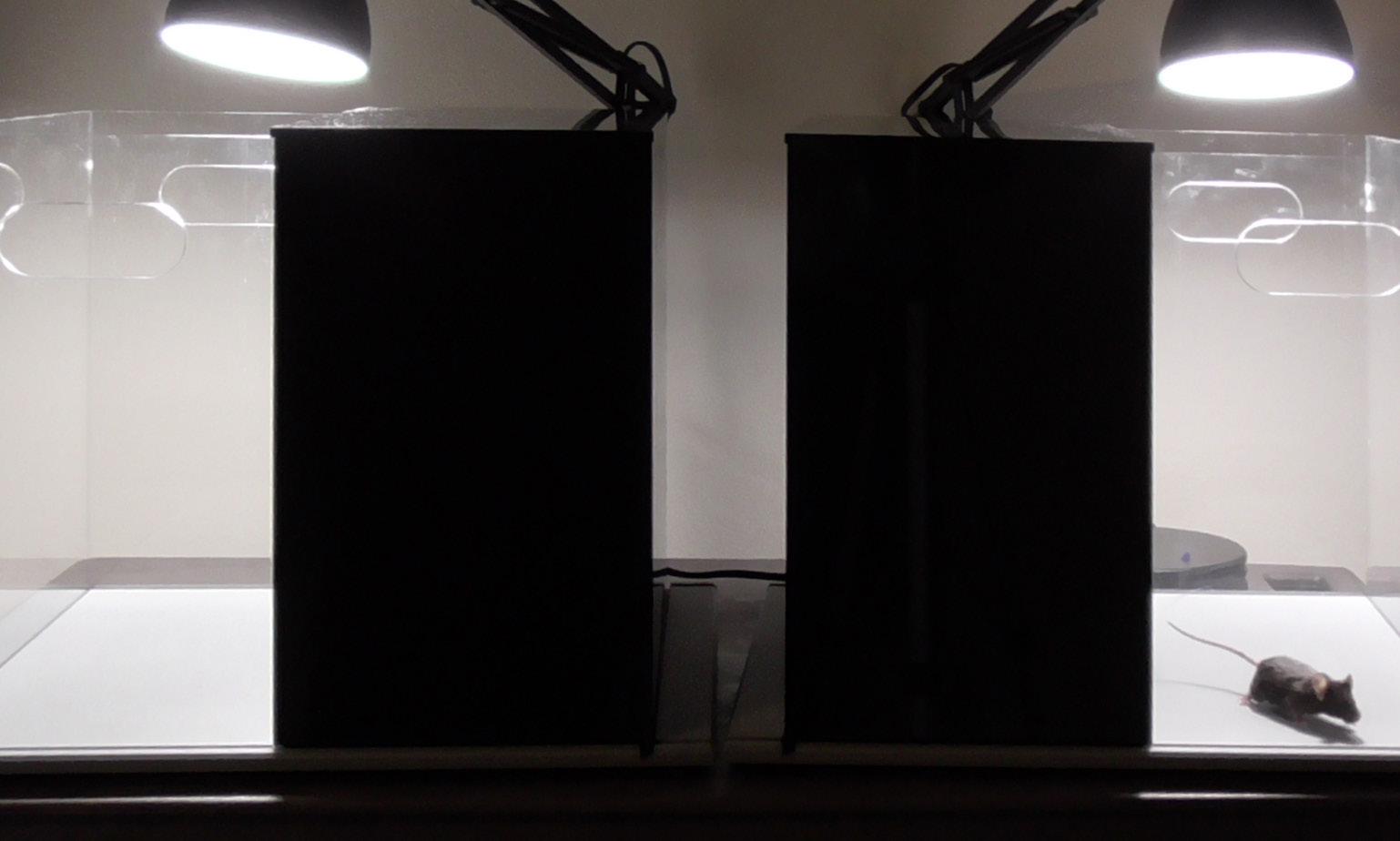
In addition to learning and being able to explain the above-mentioned topics, I expect students to read considerable amount of primary scientific literature, which should help to improve their skills in analyzing research findings, developing and testing hypotheses, designing proper control experiments, and, obviously, generating their own ideas about the scientific questions and experimental ways to answer them.
Finally, if this course manages to convince the students that 1. critical thinking is a must in science/research; 2. understanding is more important that memorizing; 3. concepts are more important than details - I would be quite happy.
9
Raghd Ahmed
As President of the Biology Club, a Biology Department Leader in the Division of Science Student Council, an intern with Memorial Sloan Kettering, and a student in Dr. Karen Hubbard’s lab conducting research, Raghd Ahmed has many responsibilities. She is a current Biology major in her junior year. When it came to deciding where to start her education journey, she saw City College as the best option for its quality science program and diverse collection of students and professors. Some of her favorite professors have been in the Biology and History Departments because they have shown her their will to understand and help students with coursework and foundational concepts.
Raghd is motivated by the amazing friends she has met along the way and seeing representation of her own culture reflected in the student body. What she enjoys the most about her studies is the wide variety of applications they can be applied to. Being a biology major is “a door to everything”, including becoming a Physician Assistant, Doctor, Researcher, and more. Now, Raghd sees these possibilities while getting to apply her learning about triple-negative breast cancer cells in Dr. Karen Hubbard’s lab working with the Memorial Sloan Kettering Immigrant Health & Cancer Disparities Service.
A typical lab day for Raghd includes shadowing a lab technician to learn and absorb all the aspects of work
in a lab setting. From learning about cell culture and polymerase chain reactions on campus, she gets to engage with the other end of scientific research and care - the patients. While working at Memorial Sloan Kettering, she helps with a research study that records the quality of life of patients who have received treatment from the center. She also helps inform potential patients across New York City’s boroughs about screening for breast cancer and assists them in finding doctors to help with other medical needs. What drives Raghd to take on these opportunities are her parents, who sacrificed a lot and worked hard to create a life after coming from the Middle East. She’s also inspired by the women in her family, who did not get the chance to go to college like she did. Now that she has these new chances of learning in front of her, Raghd feels that “it only makes sense to be as successful as possible and take every opportunity to achieve my dreams.”
The biggest piece of advice Raghd has for women, Muslims, and immigrants pursuing work in STEM, is that it will get easier. When she first started college herself it was hard. After working through the coursework and lab procedures she struggled with, she found that each time she went to do something new, it was less difficult then before. We need to “change the way we look at things,” she says, because “struggling and not knowing is a part of the process.” For Raghd, her process was getting test after test in her science courses and not being happy with the results. By learning to manage her time, she is able to focus on each class individually, perform well, and even add an internship to the schedule. When looking towards the future, Raghd does not know where exactly she will be, but she does know that she will follow her dream of influencing people to change their lives for the better. Whether that is through medicine or teaching, she can count on her friends to help her and make the rest of her time in college impactful and pleasant. Raghd believes that by “making friends, knowing people, and putting the effort to put yourself out there and be open and nice to other people, it will pay you back
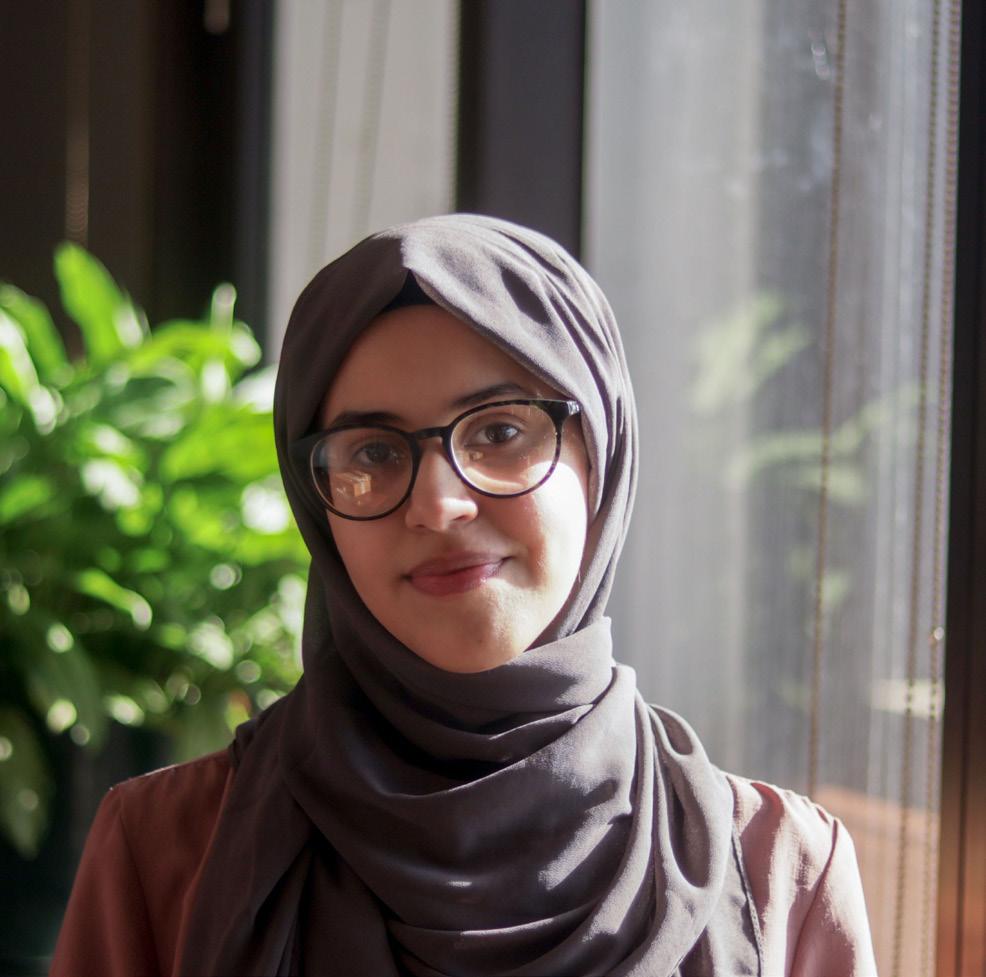
10 Student
SPOTLIGHT
“It only makes sense to be as successful as possible and take every opportunity to achieve my dreams.”
Student SPOTLIGHT
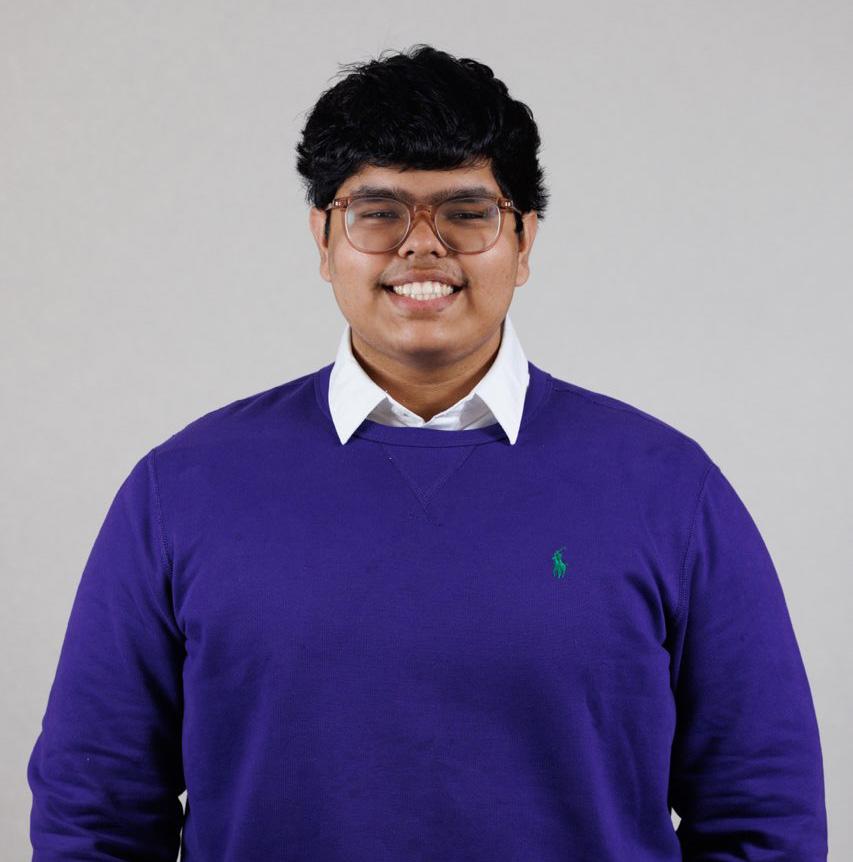
Fardin Khan
Fardin Kahn knows the meaning of hard work. As a rising Macaulay Honors senior at City College, he takes on new challenges in every step of his education. Fardin emigrated to the United States at the age of 8 from Bangladesh. His interest in biology and medicine began during his childhood. While visiting libraries in elementary school, he was drawn to material with depictions of molecular subunits of life such as National Geographic magazines. Over time in school, this interest grew into his current job as a Branch Clinical Manager for Clear MD, and ultimately is motivating him to achieve his goal of applying to medical school in 2024.
When applying to colleges, Fardin thought that City College was a great environment to make his goals reality. Affordable and alma mater to medical alumni such as Dr. Arthur Kornberg, who contributed to DNA and genome research, Fardin sees CCNY as a historic institution with many opportunities to support student learning. He mentions how the CUNY BA program, which is allowing him to create his own major in Biology and public health disparities, while curating his classes around other CUNY campuses, is a program that more students should consider exploring. Another opportunity is the S J Levy Fellowship for Future Leaders Program, in which Fardin participates in resume building, cover letter writing, and interview skill workshops. He was also connected with an internship opportunity at NYU. He finds the program “tremendously helpful” and shares information about
it with other students from all of CCNY’s academic divisions when given the chance. Over the course of his studies, Fardin has already scored well on his MCAT exam, become a registered EMT, and helped his community in Bangladesh by volunteering with local physicians to give vaccines during the COVID-19 pandemic and caring for people injured by floods in the summer of 2022. These episodes of aiding in public health and making a lasting impact on the wellness of communities that face medical disparities motivate him to pursue his studies.
Fardin has learned from his parents, who are communityoriented. Even after moving to New York, his father is still in contact with Fardin’s childhood physician, and supports his hometown’s medical practice by sending supplies when he can. This shows Fardin how far the force of good can go. His competitive mentality and support of friends and family has aided him in his academic and personal success. His friends “have a dynamic of just wanting to make each other better” and help one another through shared study sessions and indirect accountability. Together, they are working on a project to raise awareness about and change the culture of being an EMT, which includes supporting a wage increase from a low pay of around $17 per hour. Fardin advises people to “stop focusing on what may look good, and just do what you genuinely want to do.”
11
“Stop focusing on what may look good, and just do what you genuinely want to do.”
Student SPOTLIGHT
Naoroz Mahmood
She also engages with undergraduate students through TriBeta, where she connects others to biology research and academic opportunities, and even mentors students who feel they need extra help. For Naoroz, being a part of the S. J. Levy Fellowship Program has helped connect her to opportunities as a student, such as a chance to work as a research intern at the New York University Grossman School of Medicine over the summer. Her educational experience extends to working in a research lab run by Dr. Karen Hubbard, where Naoroz gets to learn about patient cognitive impairment induced by the effects of chemotherapy. Here, she enjoys learning about research that focuses on the patient experience directly and has the potential to contribute to improving future patient outcomes and quality of life.
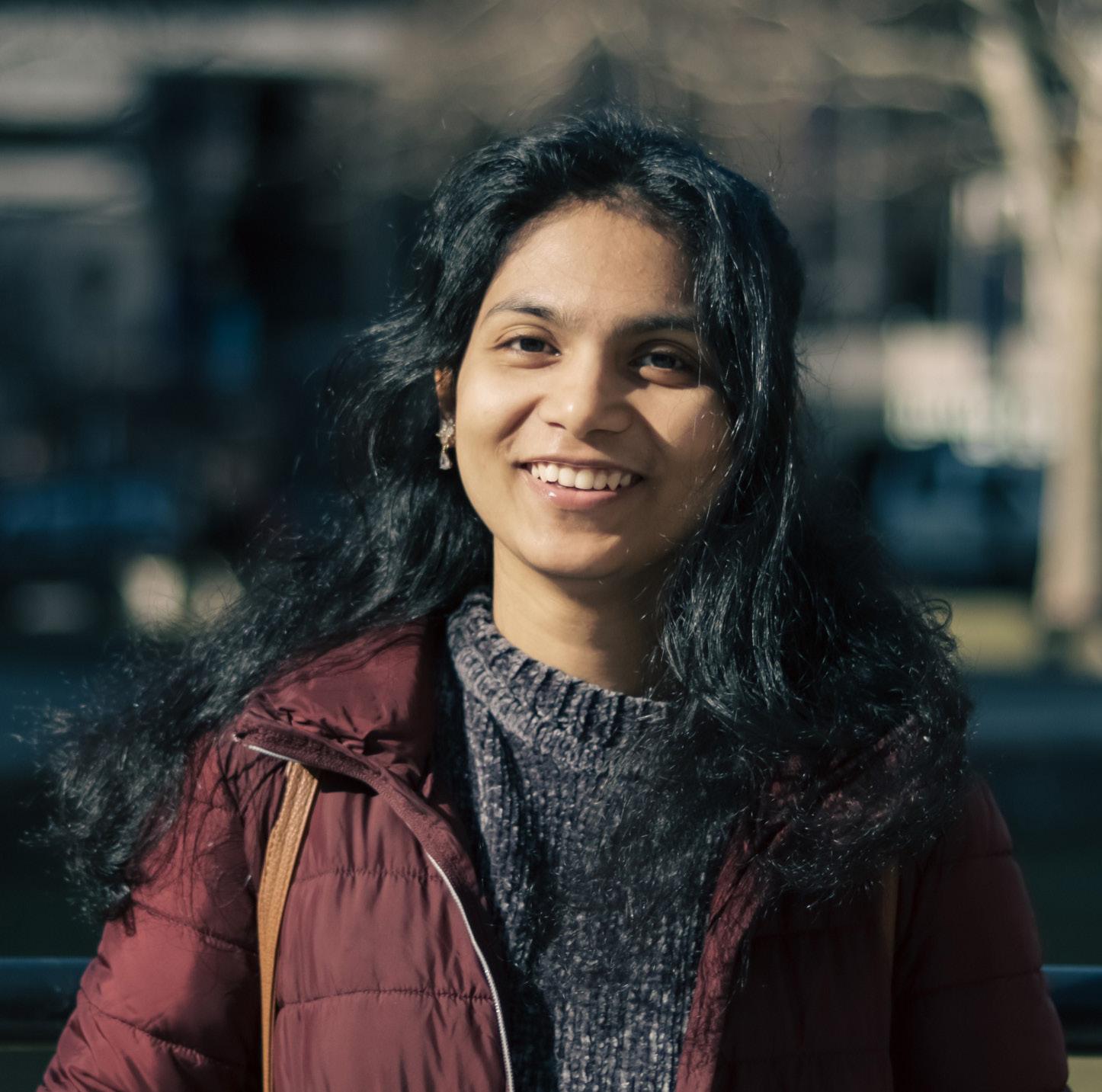
Naoroz Mahmood chose to follow her hopes of bettering her education and becoming a physicianscientist when she came to New York City with her sister from Bangladesh at the age of 15. She has turned this dream into a reality as a current Macaulay Honors junior student on the premed track at City College. Her studies focus on Biology and Philosophy, areas she wants to apply to her passion in learning about human cognition and consciousness, while working towards becoming a neurologist. This passion developed from growing up with her father as a professional role model in the healthcare field, and it continues to grow stronger through her Biology and Biochemistry courses. Even though she is far away from her family, Naoroz keeps them close in spirit by carrying on the values and work ethic she learned from them.
This work ethic takes her far, because as a course tutor, TriBeta Biological Honors Society President, S.J. Levy Fellow, and researcher in Dr. Karen Hubbard’s lab, Naoroz is accomplishing many goals. As a Biology 10200 tutor, she loves engaging with new undergraduate students and helping them review for class in ways that are effective to their understanding and applicable to other biology courses. “I’ve come to view my students’ successes as my own,” Naoroz says, “so putting in effort to create resources for them is incredibly satisfying.”
Naoroz’ older sister is her inspiration to pursue leadership roles and follow the things that interest her. She also attended City College. After witnessing how diverse and inclusive the CCNY culture is, Naoroz decided to become a part of it herself with the goal of bridging the gap for students who are unable to access resources or information in this type of environment. She also learned about the difficulties of college from her sister and found that what helps her get through academic and emotional challenges the most are the people around her. She thanks supportive friends, advisors, and mentors, but most of all, Naoroz thanks her sister, who has helped raise her since they came to New York together and provided support through all the ups and downs. “I really couldn’t have done anything without her,” Naoroz says. What has also helped her get through hard times is trying to take breaks, and eat and sleep on routine, which she advises other students to do. Naoroz knows that, “as a premed student, it can be so hard to find time to relax”, but “even machines need maintenance to work effectively!” Making rest and relaxation a priority alongside studies is important to continue to work well academically, work towards personal happiness, and lengthen life expectancy. Naoroz keeps this in mind to manage stress and wants to encourage others that whenever things get too hard, there is always support available.
12
“I’ve come to view my students’ successes as my own... so putting in effort to create resources for them is incredibly satisfying.”
Student SPOTLIGHT
Rachele Rameau
As a doctoral student, Rachele has explored different model organisms, including C. elegans and Dictyostelium, until focusing on cancer research using mammalian cell lines and mice xenografts. Throughout her PhD, while exploring options for her research work, Rachele realized that CCNY could offer students support and many research opportunities. She found herself fortunate to join Dr. Karen Hubbard’s lab and being given the opportunity to collaborate in understanding potential mechanisms by which ruthenium-based compound, Ru-IM, is inducing cell death in cancer cells. Her doctoral thesis work focuses on the role of ruthenium-based compound, Ru-IM, in altering mechanisms in triple-negative breast cancer derived from different ethnic groups. What Rachele enjoys the most about her studies and research is the opportunity to use a variety of techniques and procedures to understand and explain phenomena and find possible answers to her scientific question.
After coming to New York from Haiti and exploring different options for her college studies, Rachele Rameau knew that science was the right choice after taking her first introduction to biology course. She immediately wanted to learn more, and now she is completing her PhD at the CUNY Graduate Center Molecular, Cellular and Developmental Biology Program. What led her to this point is a path of hard work, dedicated studying, and finding supportive mentors along the way that helped her explore her education and career options.

Rachele first learned about research while completing advanced research courses in her undergraduate studies at Brooklyn College. There her first lab experience was studying the potential of microalgae as a source of biofuel production. She found joy by learning about the big picture in science as well as technical skills including how to isolate and screen different algal strains derived from freshwater for their lipid content. She is grateful for her participation in the New York City Louis Stokes Alliance for Minority Participation (NYC-LSAMP) which helped her stay focused and interested in the different ways biology work is produced and presented. In addition, she gained opportunities to attend national conferences, and continued additional research on viruses that attack Mycobacterium smegmatis and on functional yeast amyloids which led to her first publication.
Research and lab work require a lot of troubleshooting and thinking outside of the box since the answers are not always clear cut. Rachele keeps at it by staying openminded and remembering to approach problems in new ways. She attests to her self-discipline and endless support from mentors as key in moving forward with her work. Keeping in mind that everything “is a work in progress”, she says and she “just tries to learn every day and learn new ways to do things” whenever she can. She knows firsthand how hard the path to reaching our goals can be, but “we have to keep faith and keep working,” because “nothing is perfect, we must trust the process of trying new things and seeing what happens.”
Advice she offers others is to participate in programs such as the Graduate Research Training Initiative for Student Enhancement (G-RISE) if possible and engage with mentors and peers who will help lift you up when you need motivation to keep going. “At the end of the day, you will be the one making the decision,” Rachele shares, so trusting yourself, choosing what you want to do and what works for you is the most important. Rachele will take this strong mindset with her into the future, where she sees herself putting more time into what makes her happy, such as research and teaching, and she will keep an open mind to what comes along the way.
13
“Nothing is perfect, we must trust the process of trying new things and seeing what happens.”
Celebrates Our Retired Faculty

Dr. Amy Berkov
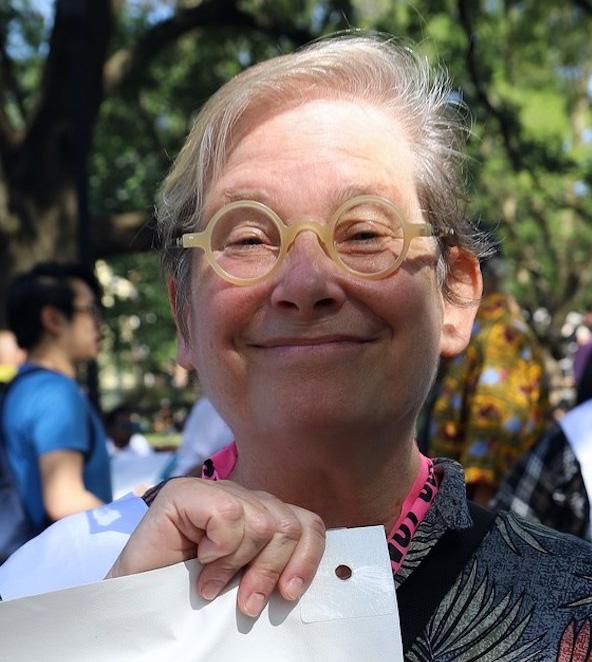
After teaching at City College for over 20 years, Dr. Berkov is retiring from her current position as Assistant Professor in the Biology Department. Her favorite courses include Botany (which was taught for Landscape Architecture and Biology students), Insect Ecology, Plant Animal Interactions, and Global Change. “I’ve been pretty lucky in the courses that I’ve taught at City College,” she reflects. Her Insect Ecology course even got to work in a lab on Governor’s Island, where students helped with insect surveys; the course is running again in summer 2023, and will include help from Dr. Berkov with a former student of hers leading the course.
Dr. Amy Berkov earned her first college degree in art, and worked as a freelance graphic artist for 13 years after moving to New York City in 1979 from Colorado. She did not always see herself going into science. As the graphic design industry started to change, Dr. Berkov decided she was going to change too, and dedicated time to work at a printmaking workshop, nonprofit organizations and galleries, and local community gardens. While in the gardens, she remembered how much she enjoyed being hands on in the dirt in the backyard as a child, so she took the opportunity to take classes with the CUNY Plant Sciences Program at Lehman College, which partnered with the New York Botanical Garden. While back in school, she participated in a volunteer research expedition to French Guiana and went on vacation in Peru. It was in Peru’s rainforests where Dr. Berkov knew she wanted to pursue botany. While reaching the top after climbing a large tropical tree, she was amazed to see the extent of plant life in every visible direction, and she was reminded of the extent of human intervention on these natural landscapes. From then on, she developed an interest in tropical rainforests and things that threaten them.
Working with students is what she has liked most about her time at CCNY. She appreciates the diversity in student backgrounds, which has made teaching these courses in seminars, labs, and in the field a fun time. Her favorite time was spent out in the field. Ultimately, she has enjoyed both the research and teaching parts of her job. Since changing career paths, Dr. Berkov has accomplished and learned more in her research than she would have ever imagined. This includes learning to deal with the uncertain situations that come with forest research, and developing the planning and organizational skills to keep things going. International fieldwork is not easy, and starting off in a new place can be hard. Dr. Berkov became familiar with all the places she worked, and finds that you gain multiple homes when working around the world.
14
“They can take those skills and go on with them to something beyond.”
Dr. Berkov encourages her students to get out into the field and learn by a variety of means through lab work or reading, and by interacting directly with the environment. Whether it be field trips, normal class time outside, or specific field research, students gain the opportunity to work on their planning skills and curb the expectation for things to go perfectly. She has had to learn how to be flexible, and offers an example of this as she recalls making mistakes in the field on a trip sponsored by the Entomological Society of America in 2009. When in the field, she advises her students to start with a tight plan, because then if something goes wrong, it will be easier to think of a solution.

Dr. Berkov has also served as Director of CCNY’s Master’s Program. She would advise incoming faculty “that our students are not ourselves,” and that the students may learn differently than how the faculty do. “Our students have so many different backgrounds,” she says, so it is important to be flexible. She also reminds people to be adaptable and aware of their environments, which is why she started students off by studying street trees on the CCNY campus in her Botany course. If students can learn to recognize trees they pass every day, they can gain transportable skills, and “they can take those skills and go on with them to something beyond.”
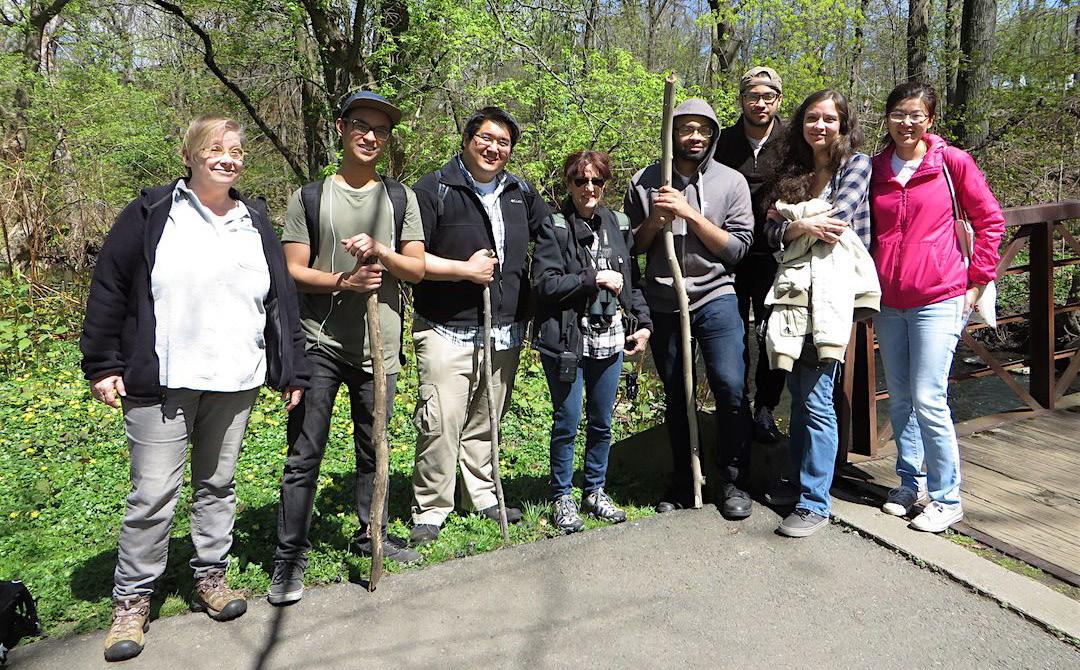
15
Celebrates Our Retired Faculty
Dr. Robert “Rocky” Rockwell
told him to set his preconceived notions aside and “act like you don’t know anything, sit back and you will learn.” It is this wisdom that Rocky carried with him over his years of studying grizzly and polar bears, and teaching the vast array of students at City College and at the American Museum of Natural History with which he had a long affiliation. Rocky always made sure to listen to nature and to his students. For years, he and his team studied populations of polar bears and lesser snow geese and their effects on the community ecology of the Hudson Bay, population dynamics of migrating waterfowl, how genetic information is exchanged among populations in the wild, and used mathematical and computational methods to assess different species’ reproductive success.

Dr. Robert “Rocky” Rockwell came to City College as a postdoctoral scientist seeking to continue his passion and research in ecology and evolutionary biology. Forty-two years later, he is hanging up his coat as a field biologist, and departing the City College community as a prestigious Professor with the Biology Department and CUNY Graduate Center. To all those who knew him either as a Professor in the classroom, or as a research mentor in the field and laboratory, Rocky instilled his love of learning in every role he took on.
After growing up in the Ozark Mountains, Rocky moved to Ohio. There he completed most of his education including high school, undergraduate, and Master’s studies, before earning his Ph.D. at Queen’s University in Kingston, Ontario. It was during his undergraduate education while studying the evolutionary impacts of snow geese that he “fell in love with people and the wildlife”, awakening his interest in evolutionary biology. When studying snow geese, he conducted field work with Cree Natives, utilizing snowmobiles to travel across terrain to observe the birds. On their first outing, Rocky asked a Cree elder, Grandfather, for advice. Grandfather
As his last years at CCNY have come to an end, some of Dr. Rockwell’s fondest memories have been attending graduation ceremonies with the sight of proud parents dressed up with pride, and having a young observer during class time when a student was unable to find childcare. A lasting lesson he hopes his students have learned is the same important lesion that he learned himself, “Accept that you don’t know anything. Sit and watch and you will learn.”
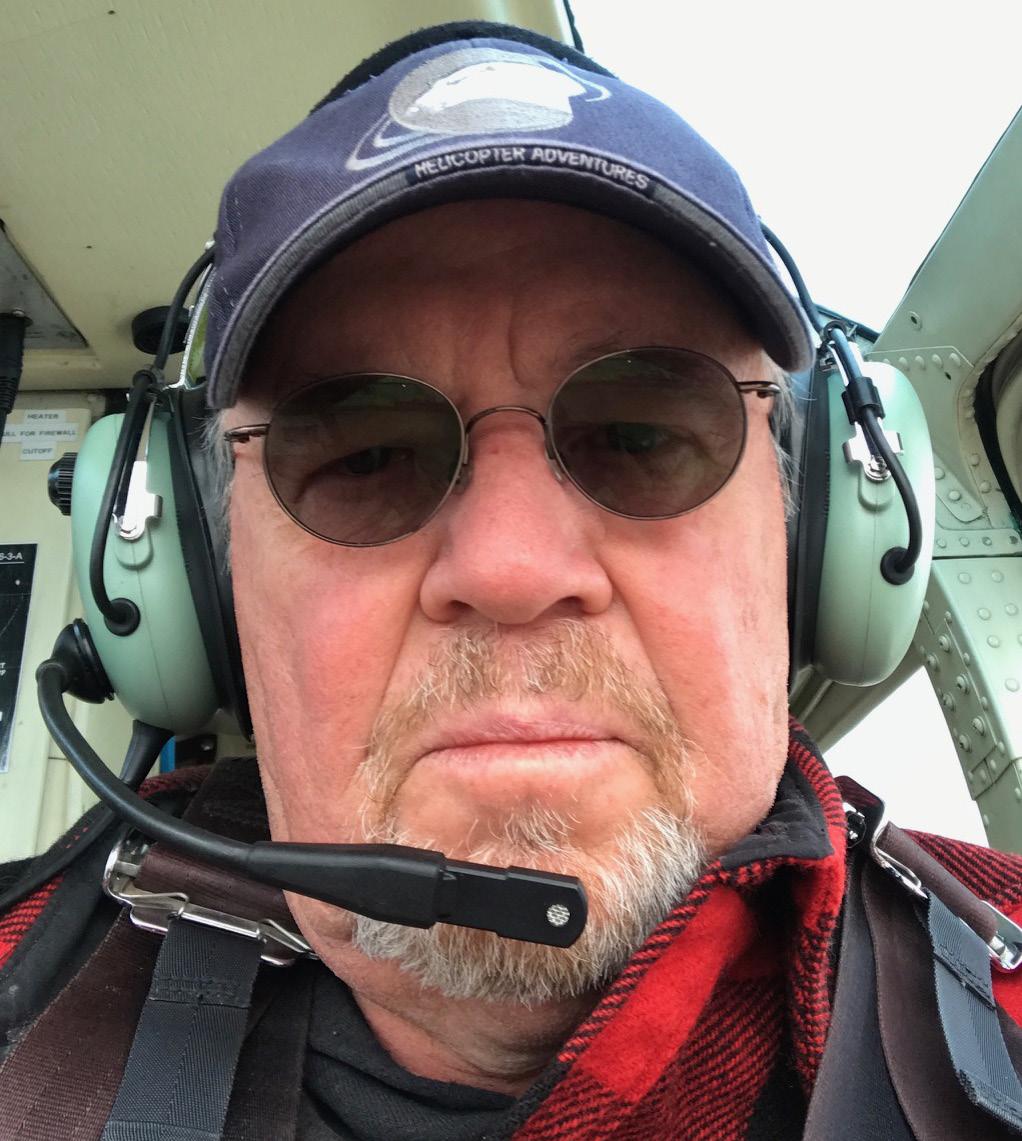
16
“Act like you don’t know anything, sit back and you will learn.”
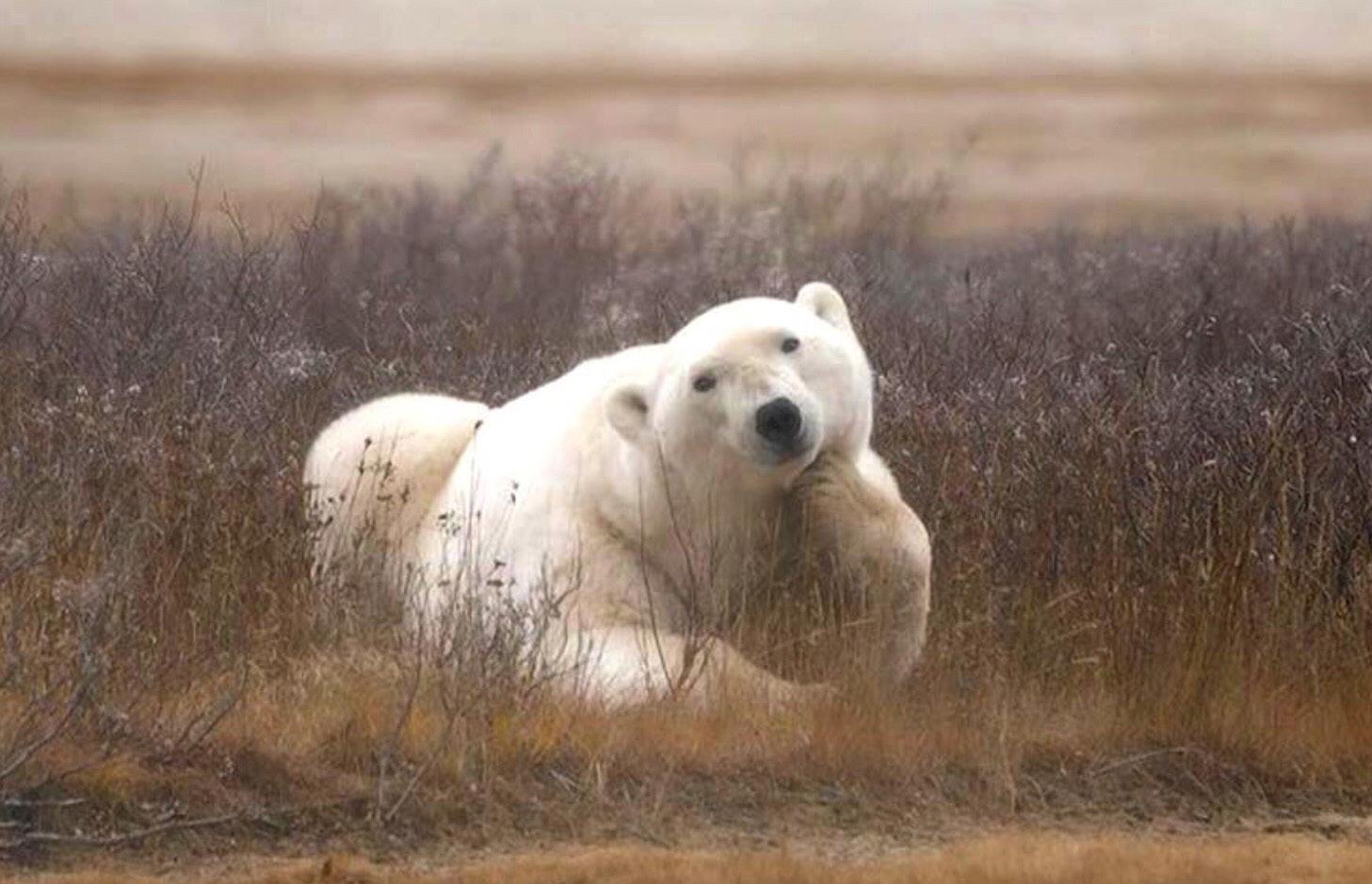

17
Recognizes Biology Office Student Assistants
When someone enters the Biology Office, they may be captivated by the art pieces hanging on the wall, the “Keep Calm and Love Biology” Poster, or the Scientific Joke of the Day drawing on the whiteboard, but perhaps before they can take it all in, they will be greeted by one or two assistants sitting at the desks near the front door with a, “Hello, how may I help you?” or an enthusiastic “Welcome to the Bio Office!” Those people, with warm smiles and eager to lend a hand, are the Biology Office Assistants. CCNY students help manage the oftentimes high volume traffic of the office. And what do they assist with? A range of things, such as finding the email address of a professor, or wanting to learn more about becoming a Biology major.
They come from all walks of life, with their own aspirations and dreams. So let us meet some of the Office Assistants!
Nicole Baque is a 20-year-old Biology major whose career goal is to become a veterinarian. Her passion for animals came about when her grandmother would take her to the zoo. Her love for animals extended to watching animal documentaries, and when it was time for her to choose a pathway in college, studies in biology were a natural fit. Now, as a CCNY student, she volunteers at an animal clinic, getting vital hands-on-experience.
Not all of the Biology Office Assistants are Biology majors. They represent the student body here at CCNY, most pursuing STEM majors. Joseph (“Joey”) Gallo-Rodriquez, for example, is a Chemistry major. One of the most zealous assistants, his out-spoken nature helps to make the biology office a social and welcoming place for all. For instance, when a group of Math professors came to the office to scout the layout to plan their own new department office, Joey guided them, suggesting ideas and turning the discussion into how Math courses at the College could improve using his own chemistry-related math experience.
Another bright Biology Office Student is Yves (“AJ”) Jeudy, a Junior studying Childhood Education with a concentration in Literature. AJ has the patience and knowledge that comes with wanting to one day become a head teacher in literature. His all-time favorite part about being able to work in Room 526 is the kindness that all the professors, staff, and office assistants show one another.
Maryam Tuba, another Junior Biology Office Assistant, is a Psychology major and Chemistry minor. As a student currently on the Pre-Med track, like a lot of Biology majors, she has insight on the subject. According to Maryam, Psychology was what she chose because of its focus on both the brain and mind. This, she says, can lead to a comprehensive background in communication, empathy, problem-solving, and many other attributes desired in a physician—her intended future career. Since her freshman year of college, Maryam has been an active part of the Biology Department; thus her transition into becoming a Biology Office Assistant was perfect as she cherishes the friendly environment cultivated by everyone there.
So next time you may be cruising down the fifth floor of the CCNY Marshak Science Building and have questions about your biology courses, starting a Biology major, or are just seeking general assistance, stop by Room 526 and the assistants there will be more than happy to help.
18

19
Where Are They Now FEATURE
Joshua Vaughan
Since graduating from City College, Joshua Vaughan now works in the pharmaceutical industry as an Occupational Toxicologist to assess and analyze the potential exposure and adverse effects of chemicals on people. Just as a pharmacist works with our medications to ensure our safety as patients, Joshua looks at these medications too, but from the point of ensuring worker’s safety when manufacturing and handling their active ingredients. Before this, he was doing similar work in the pesticides & biocides arena also assessing human health risk. As a child, he would not have guessed he would be doing this type of work, admitting, “I didn’t know it existed, let alone how to spell it.” But from joining CCNY and working in the botany and microbiology lab of Dr. Amy Berkov, graduating as a pre-medical student, getting his Master’s degree at New York University in Environmental Health Science, and obtaining a Ph.D. specializing in Inhalation Toxicology, Joshua finds himself happy with the path his education has taken, and constantly seeks to learn new things.

Joshua loved science in high school, and after attending career and college fairs to see where this love could take him, he came across the Sophie Davis School of Biomedical Education. Like many students at CCNY, Joshua saw joining the CUNY community as a step towards creating his own life path based on merit. It was love at first sight when visiting the beautiful campus for the first time after commuting from far out in Brooklyn.
Since becoming an Occupational Toxicologist, Joshua has seen how the sciences play a role in serving public safety and he takes pride in getting to “wake up every morning with a daily goal of protecting someone.” For the success he has today, he thanks his parents who have had to work hard through the years and hold multiple jobs to provide a foundation of growth to be the first in his family to apply to and graduate from college. He also thanks Dr. Amy Berkov for teaching him “that the brain is the almighty equalizer”, and that “it truly does not matter what position or title one holds in the sciences rather what really matters is the mindset that someone carries.” Every time Joshua visits a conference or science event, he enjoys engaging with the diverse researchers, teachers, and professionals based on their knowledge and expertise, not the institution or position on their nametag. It is this constant engagement and understanding that is necessary in the field because learning does not stop when you leave the library and finish your schooling; it is a continuous process.
20
“That the brain is the almighty equalizer... it truly does not matter what position or title one holds in the sciences rather what really matters is the mindset that someone carries.”
When looking towards the future, Joshua sees his success reaching past his professional life. As a student, he read newsletters with visions of becoming renowned in the workplace, but now he focuses more on becoming revered by the people in his life. As long as he “can provide the same guidance and impact as the people that he once reached out to” (e.g., his son, wife, and mentees of the next generation), he will have felt that he has made it in life. It is this attitude of instilling positivity and developing personal and meaningful connections with others that he encourages current students to strive for. Lastly, Joshua also stressed “it’s okay not to have it all figured out”, because each decision made along the way only prepares us for something else in the path ahead. For Joshua, some of the happiest years of his life were spent in the NAC and Marshak building ‘figuring it out’ which has led him to where he is today, and he sees his current experience as an opportunity to go further in the sciences to contribute to future generations.

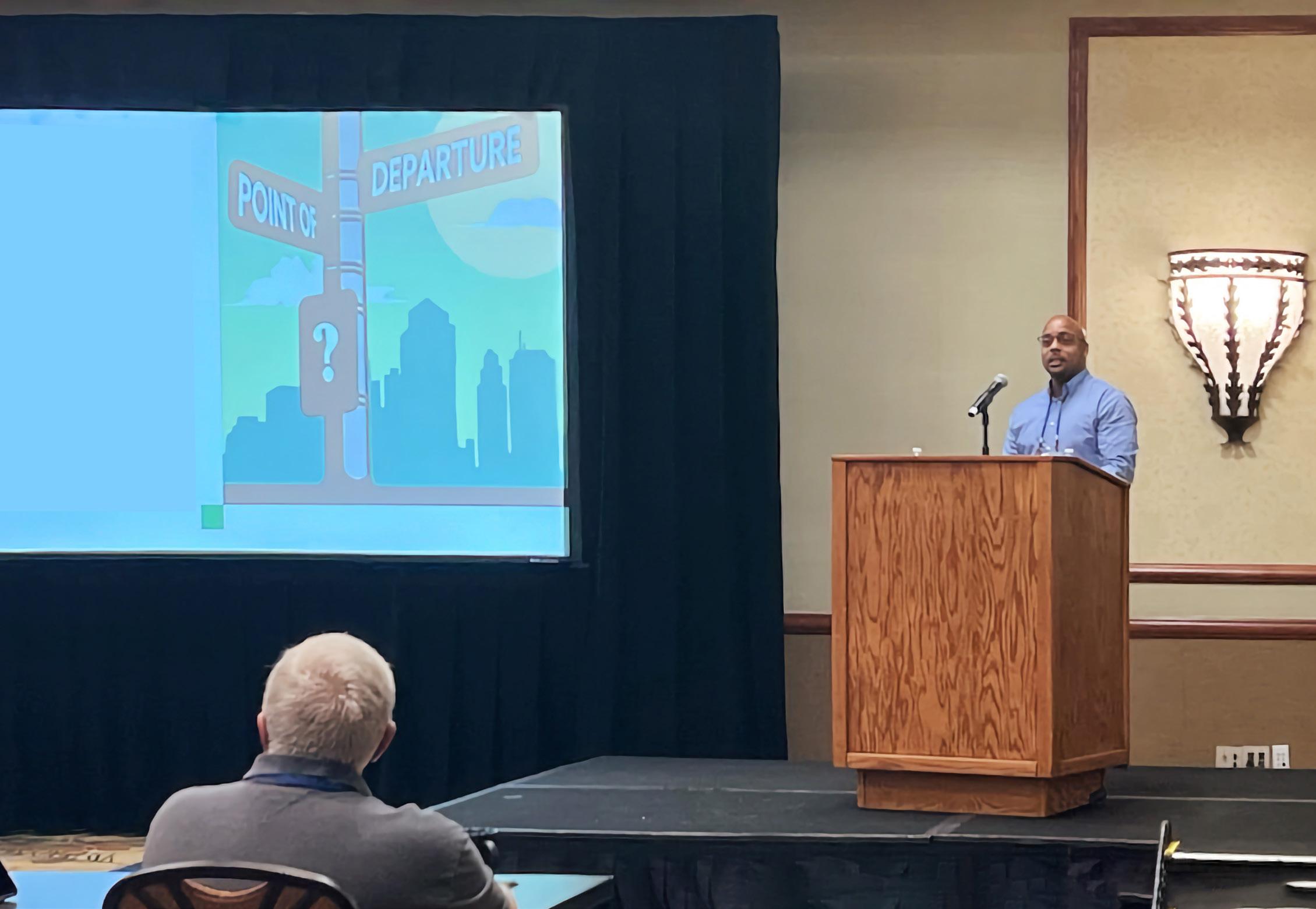
21
Dr. Melina Giakoumis Inspiring SCIENTIST
Melina Giakoumis has been a part of the City College community for the past few years as a PhD candidate with the CUNY Graduate Center. Her work has centered around the population genomics of sea stars in the North Atlantic Ocean. Working in the lab of CCNY Biology Professor and Principal Investigator, Dr. Michael Hickerson, Melina is a member of the PhD Subprogram in Ecology, Evolutionary Biology, and Behavior (EEB). The lab’s specialty in community population genetics supports Melina’s plan to understand the history and future of sea stars, including a decline in their population over the past several decades. Using population genomics, ecological modeling, and field surveys, her research works to answer questions that could help conserve the species. Genetic data gives her insight into the patterns and history of genetic variants of entire sea star populations, which can reveal how they adapt to environmental changes.

Melina earned her undergraduate degree as a double major in environmental studies and anthropology at Adelphi University in Long Island. She became interested in marine science while visiting her family in Greece as a child, and over time, noticing the collapse of fisheries in the Mediterranean Sea. This grew her awareness of the ways science can solve problems, and led her to obtaining her Master’s degree in Conservation Biology at Columbia University. She then worked as a Research Technician in the genomics lab at the American Museum of Natural History, and got hands-on experience sequencing the genes of such organisms as bacteria, big cats, and even whales. This experience pushed her to want to pursue her own research and obtain her PhD. Melina has worked in science for over a decade, and her ultimate goal is that her “contribution to research helps wildlife managers make decisions about how to best conserve important regions of the world.”
When it came time to look for a PhD program, Melina came across an opening at City College to take on a marine science project and thought it was the best opportunity to be part of a happy and collaborative community. Upon reflection she feels right about this choice, having been a part of a team of supportive graduate students over her six years at CCNY.
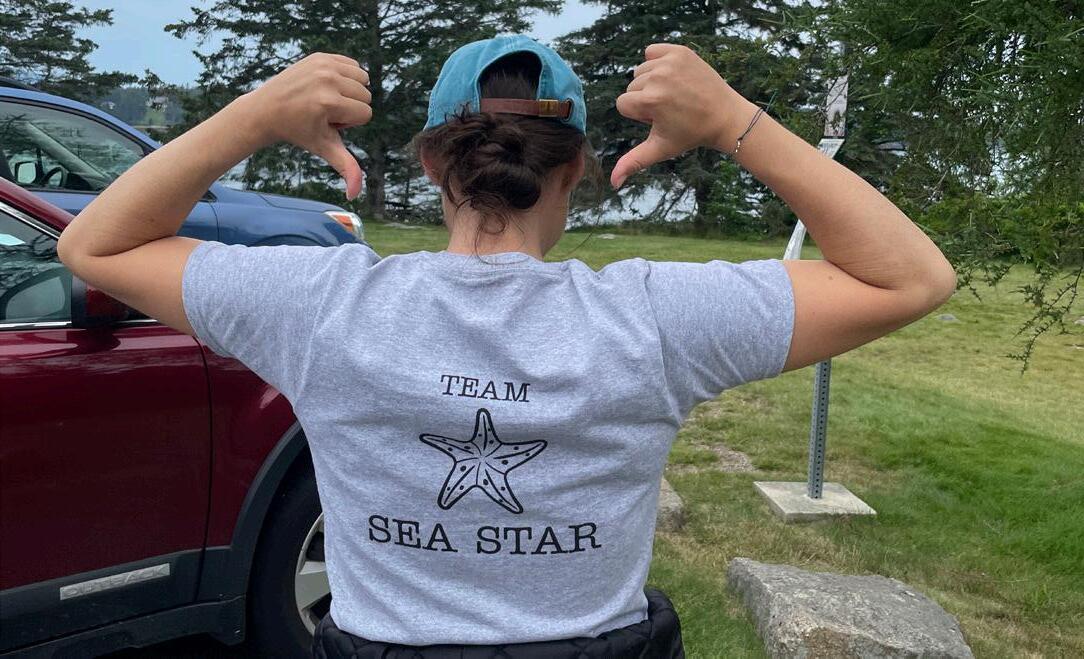
22
“Contribution to research helps wildlife managers make decisions about how to best conserve important regions of the world.”
Dean Perkins specially deisgned t-shirt.
No two days of work are the same for Melina, with her schedule including analytical computer science, time in the field, and wet lab work where she frequently sequences DNA. It is this variety of work that she finds refreshing, especially after swimming in the freezing cold Gulf of Maine for months at a time. Her favorite part of the job is the fieldwork that exposes her to nature and animals, which has taken her up and down the coast of North America, including Acadia National Park, Cape Cod, and Nova Scotia. These regions are home to two species of sea star that Melina commonly works with, Asterias rubens and Asterias forbesi. For a long time these species were separated across the Atlantic Ocean, but as geological history progressed, they have come to coexist and even hybridize in the North Atlantic. Melina’s favorite species of sea star is actually native to the west coast, the Pteraster tesselatus, also called the slime star, which she came across while in an invertebrate zoology class at Friday Harbor Labs in the University of Washington. This tiny sea star is known for an oozing layer of slime it releases as a defense mechanism. Melina shares that following her interests and working in a team is what keeps her happy. She brings people out into the field with her whenever possible, and loves opportunities to engage with and train others. She is part of collaborative lab environments at CCNY and the American Museum of Natural History, which has opened her to new ways of thinking and new types of data analysis. To others looking to enter the field of science, Melina strongly advises that one finds a group of people to genuinely connect with, “not to guide you through the process, but to be there to support you through the process. It makes your life a lot better.”

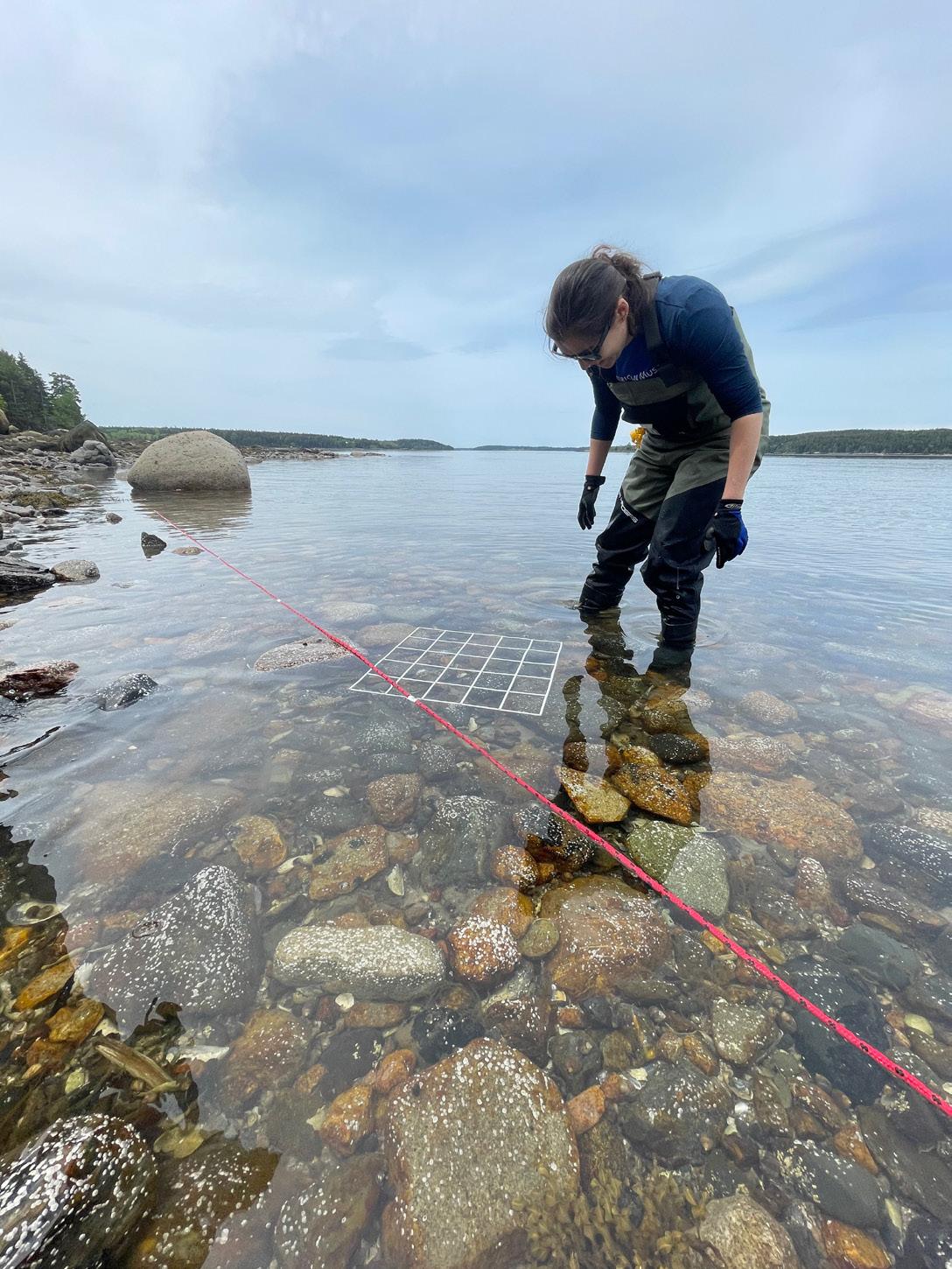
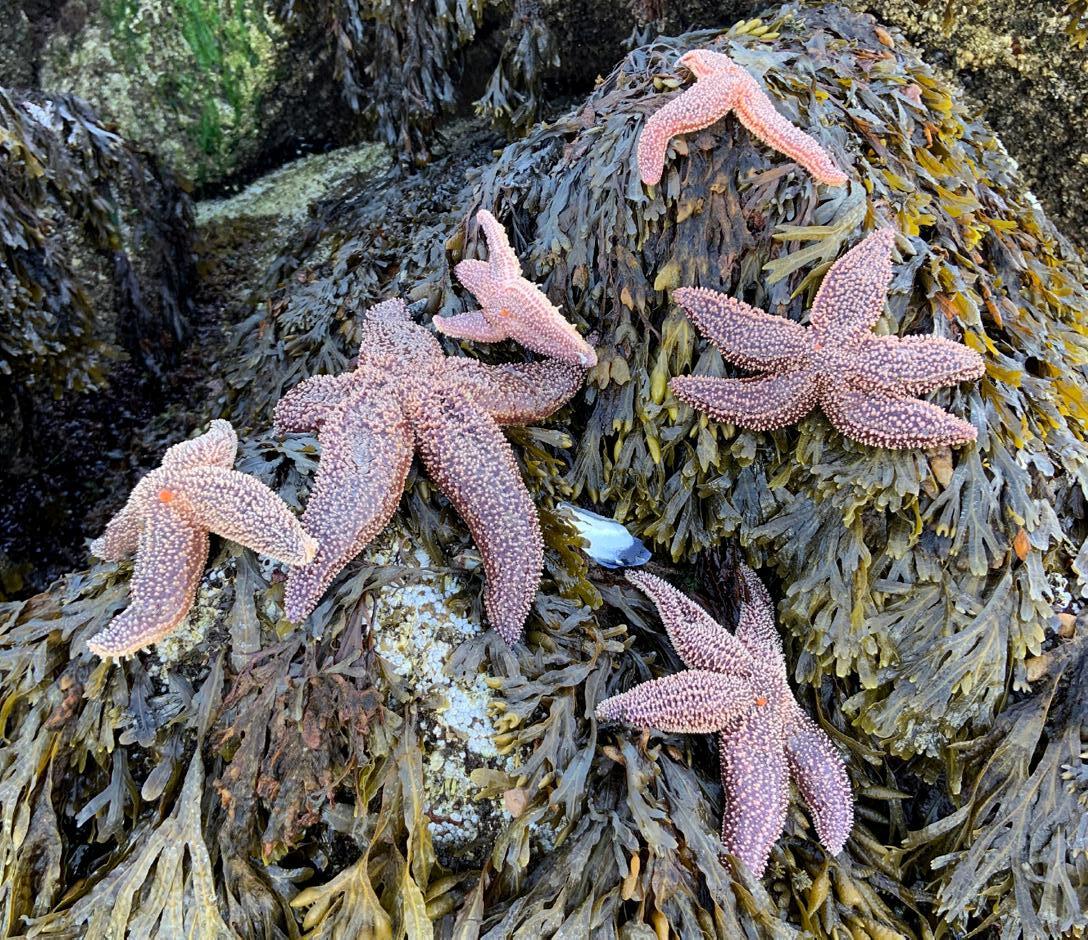
23
CCNY Biology
Team_Biology
CCNY Biology
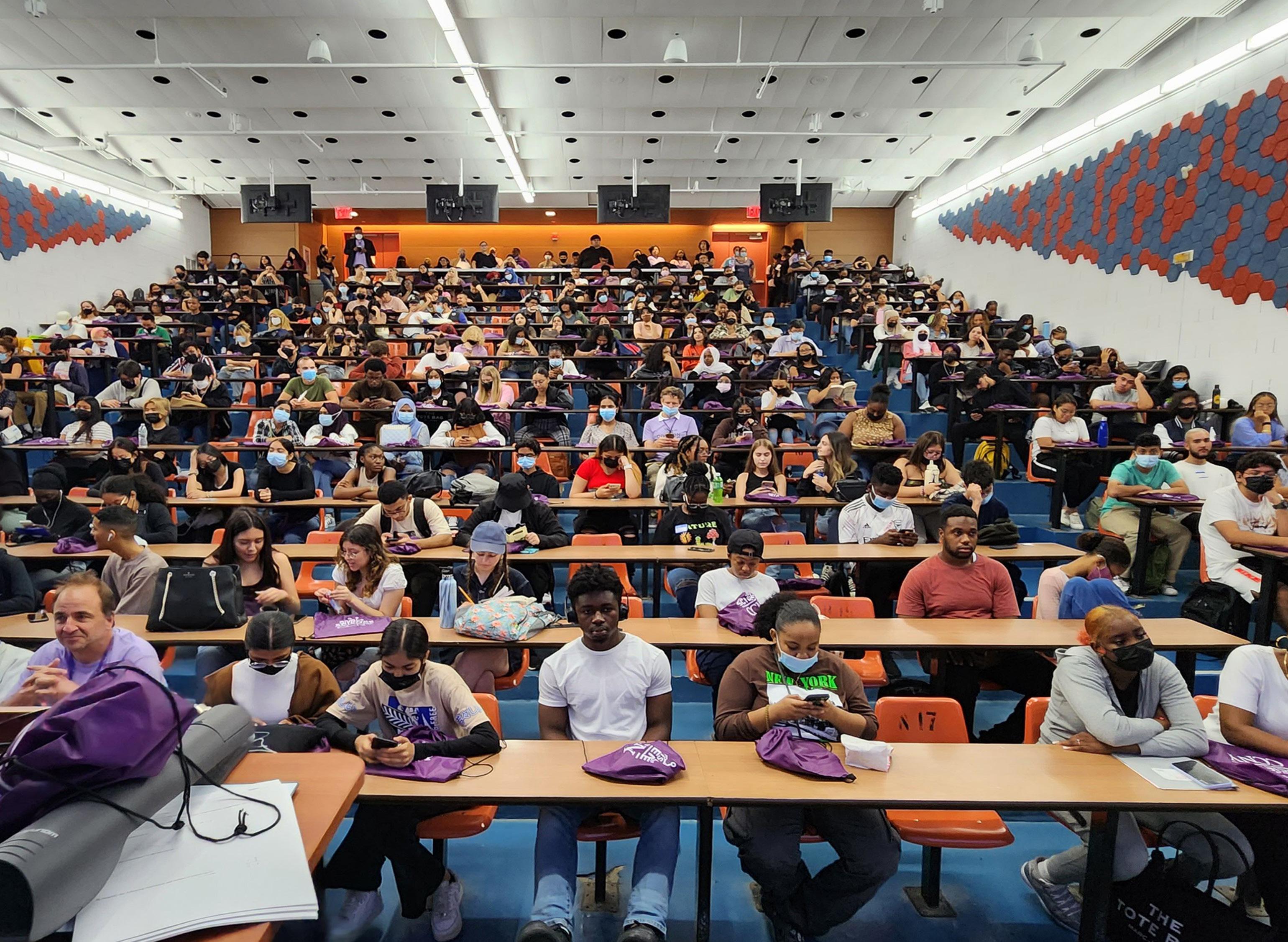
CCNY Department of Biology








































































